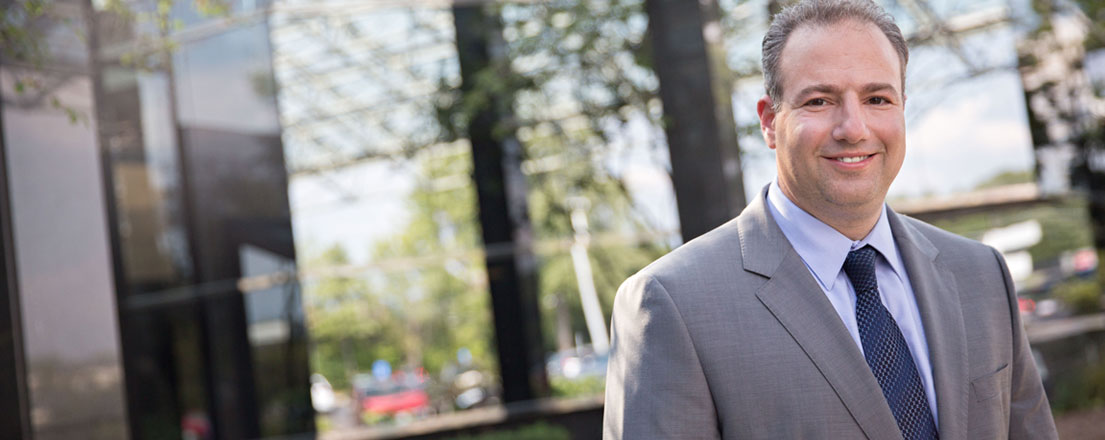
Breathing Life Into the Fight Against Cancer
According to the American Cancer Society, each year, lung cancer kills far more Americans than any other cancer – more than breast, prostate and colon cancers combined.
“Lung cancer is the big one,” says Dr. David Sternberg, a board-certified, surgeon and one of Hour Detroit’s “Top Docs,” specializing in minimally invasive surgery. “When you talk about dying of cancer, it’s usually lung cancer. My patients are in for the fight of their lives.”
Yet lung cancer is also the most stigmatized cancer, Sternberg argues. “You don’t see people marching for lung cancer,” he says. In fact, others often blame patients for contracting the disease, a claim he calls “deeply unfair.”
Although young people can get lung cancer, the average age at diagnosis is 72. Many of Sternberg’s patients got hooked on cigarettes as teens, at a time when tobacco companies continued to claim smoking was harmless. Most of Sternberg’s patients kicked the habit years before becoming ill, he says. And about 11 percent never smoked. “Those people have radon in their basements, or it’s genetics,” he explains.
For Sternberg, the fight is personal
As a child, he spent many nights trying to sleep sitting in a chair. It was the only way he could breathe.
“That was an awful, miserable experience until we figured out what it was,” says Sternberg, who was diagnosed with asthma at about age 10. “People ask me what it’s like, and I say, ‘Try breathing through a straw.’”
Growing up with asthma – a chronic illness that can be managed but not cured – helped shape Sternberg’s career.
“I think we gravitate toward the things we find interesting and mysterious,” he says. “Many doctors feel uncomfortable working with lung patients. When you have someone who has trouble breathing, it can get bad very quickly.”
That’s exactly the challenge Sternberg craved.
A new kind of surgeon
At 41, Sternberg is part of a new generation of thoracic (neck and chest) surgeons. “Twenty years ago, heart surgeons typically performed these operations,” he says. “They didn’t understand lung cancer as a disease that well.”
In 2010, Henry Ford Medical Group lured the New Yorker to Michigan to serve as associate surgical director for the Lung Transplant Program and to work as an attending cardiothoracic surgeon.
Sternberg navigates inside a patient’s chest with a tiny video camera. This and other new, minimally invasive techniques have lower risks for injury than open surgery.
“It’s a great way to do the operation,” he says. “You can see things really well.”
Another plus is that patients generally suffer less pain and heal three times faster than with conventional surgery, he says. If patients need additional treatment, such as chemotherapy or radiation, it can start sooner.
Despite these advances, Sternberg couldn’t shake the feeling that his lung cancer patients were “missing something.” So, in 2010, he launched a free monthly support group for them.
“I always wanted to be the doctor who was there for his patients as they fight for their lives,” he says, “not necessarily just in the office but outside the office, too.”
The group’s agenda includes freewheeling conversation and dinner. “It’s a chance for me to talk to them as a friend,” says Sternberg. He even takes off his white coat before sessions.
Beyond the fear
In 2013, Sternberg left Henry Ford to open his own practice, Michigan Thoracic Institute in Farmington Hills and Rochester Hills. He’s still affiliated with Henry Ford Macomb Hospitals and serves on the lung cancer team at Beaumont Hospital-Farmington Hills, Botsford Campus . The support group moved to Botsford with him.
The group always has been open to anyone, no matter where they receive medical care. The sessions typically draw five to 10 people, including some in remission and some reeling from a fresh diagnosis, along with loved ones and caretakers.
Sternberg challenges the group not to give lung cancer “too much respect” and to move beyond their fear of dying from the illness, striving to live the best life possible. He looks at it like this: People don’t usually worry about dying from things they can’t control, such as nuclear war or lightning.
“With lung cancer, people think they have some control,” he says. “The truth is, we often don’t. You have to live your life knowing you’re going to die.”
No matter what course their disease takes, Sternberg wants patients to know they have the power to experience joy and find meaning in their lives.
“I know in my doctor’s brain I can’t save everybody,” he says. “But I can help them walk down that road with their head held high. We all have respect for the team that loses but fights the good fight.”
What I’ve learned: tips from one who’s been there
Dr. David Sternberg offers tips for fellow asthma sufferers:
- Treat your condition seriously. Just as someone with diabetes must monitor blood sugar and insulin, you must stick with your treatment plan.
- Steer clear of secondhand smoke. Even smoke that lingers in furniture or clothes can start an asthma episode. (And if you smoke, quit!)
- Know your triggers. Cats and cold weather set off my symptoms.
- Be prepared. I keep inhalers at home, in my car and in my hockey bag.
- Avoid allergens. I had to pull up the carpets at home and kept only a few rugs.
Sternberg’s lung cancer support group meets 6 to 7:30 p.m. on the third Monday of the month. It’s held in suite 230 of the Beaumont Cancer & Breast Care Center at 27900 Grand River Ave. in Farmington Hills. Anyone living with the disease, including caregivers, family and friends, is welcome at the free meetings.
HAP can help you manage chronic conditions like asthma. Check out our Restore Caretrack Program to learn more.
Categories: Get Healthy